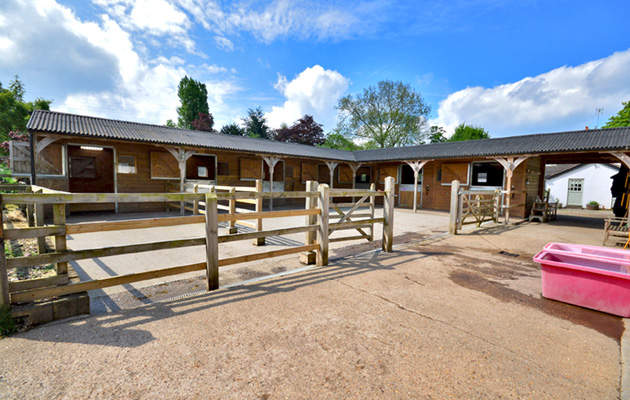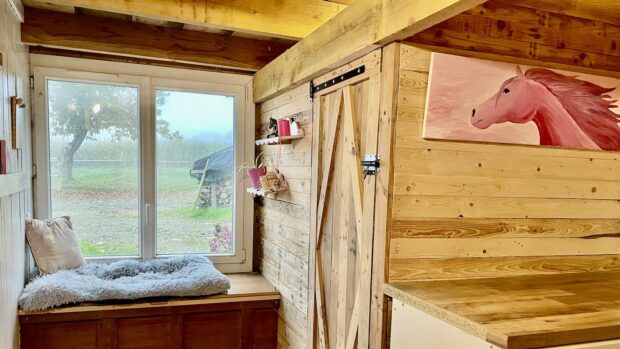If you are considering establishing a new yard, one of the first choices you will have to make is whether to choose loose boxes or American barn stabling.
When choosing what buildings or barn to incorporate into your equestrian project, space and the surrounding buildings play a big part.
“Planning permission will be needed for all permanent equestrian builds such as a barns or external stable block,” says Lorelei Tomkins of Monarch Equestrian. “What will need to be taken into consideration is; the style of which the build will be, the space surrounding it and it’s access, and also the impact on the area in which it will sit. Normally looking at buildings near your plot of land can give you some indication of what is more likely to be accepted.”
Choosing which type of stabling is better for you is a personal decision, but sometimes planning can play a big part in that choice.
“When space is premium or planning guidelines need to be adhered to then external stable blocks may be the easier answer, as they generally have a smaller footprint,” adds Lorelei. “If you are in doubt, speak to your local planning officer for advice.”
“Well-situated and designed, both options offer a first-class environment for horses and the final decision between the two systems is likely to be a matter of personal preference and the requirements of the local authority planning office,” says Scotts of Thrapston’s Julia Berrie. “However, there are some important considerations.”
• Cost is always a significant factor and American barns tend to work out significantly more expensive than loose boxes for the same stabling capacity. Obviously, you will get more for your money and the size of the building, coupled with some other benefits, might well make up for the added expense.
• Planning permission is usually more difficult to obtain for American Barns, especially in sensitive locations. The increased ridge height and more modern style of building can invite opposition from the planners. Loose boxes, by contrast, can be configured in a much more “traditional” way, with a less intrusive ridge height, that blends in better with the surroundings.
• In working yards, especially in riding schools and livery yards, American barns are popular since everything is in one place and arranged around a central passageway. This results in less walking for grooms and a more efficient workplace.
• Both options can be fully “customised” to suit individual requirements. Colours, layouts, styles and architectural details can be altered to suit either the desires of the customer or the stipulations of the planners.
• Loose boxes offer greater scope for increasing the capacity and expanding the yard while retaining the original design scheme. By simply “adding on” more loose boxes using the same materials a larger yard can grow incrementally from a small one.
• Mucking out in the winter is much more pleasant for the grooms in an American barn. A central, covered passage gives total shelter from both wind and rain. Large sliding doors at either end of the passage allow access for a trailer or barrow, or even a tractor.
• Horses hate draughts and while the clear top-storey in an American barn gives excellent high-level ventilation, the internal partitioning stops draughts at horse level. In loose boxes, a ventilated ridge can give the same benefit but they are generally not as well ventilated.
• Natural light enters an American barn through the open top storey, giving good illumination throughout the day and giving a generally “airy” feel. Loose boxes need more artificial lighting to achieve the same effect.
• Loose boxes offer better isolation facilities. If a horse needs to be kept apart, for health or behavioural reasons, then it will be easier to manage in a loose box with its own outlook rather than in a box within a barn set-up.
• With an American barn, if one horse gets sick, they probably all will. This is, however, less likely to happen in a traditional stabling set-up.
• Horses are generally sociable creatures and they appreciate the shared view of each other within an American barn. An alternative view can also be provided by adding a rear-top door and this situation can lead to happier horses than the more secluded existence within loose boxes.
• Internal partitioning within an American barn is easier to re-arrange to suit changing circumstances, whereas loose boxes offer less flexibility, once built.
• Although American barns offer complete shelter from the elements, loose boxes fitted with a 6’ overhang will provide excellent shelter from all but the most persistent storms or driving rain. Careful orientation at the design stage can also guard against the prevailing wind and make the most of the natural light available.
Sometimes, adding new stables depends on existing buildings in the vicinity.
“The majority of the time, we end up designing new buildings around existing buildings on site as most people like to match things such as roofing materials and wall cladding,” says Scott Green, former business development manager of a stabling company. “The good thing with standard type loose box stables is they are a lot more flexible with regards to design, as we can build lots of different, weird and wonderful shapes and sizes.”
A lot depends on the materials you use, too.
“With timber American barns you are quite restricted as we have limits to how far the timber can span,” adds Scott. “However, with steel framed buildings you can do more, but you will end up spending more.”
- To stay up to date with all the breaking news throughout the Paralympics, Burghley, HOYS and more, subscribe to the Horse & Hound website
You might also be interested in:

How to get planning permission for stables

Subscribe to Horse & Hound magazine today – and enjoy unlimited website access all year round





